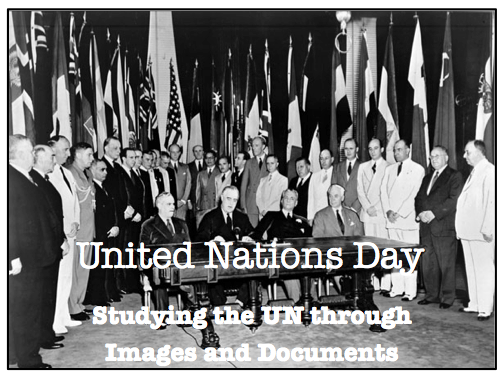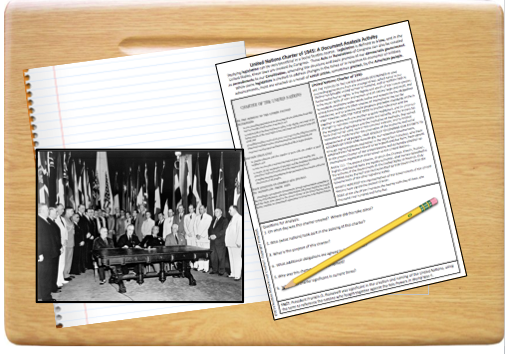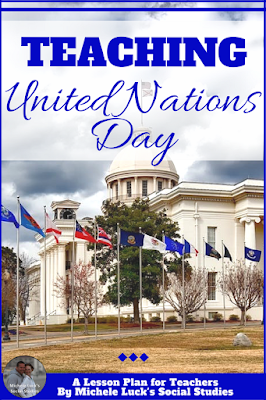On October 24th, 1945, the required number of nations ratified the United Nations Charter, including the United States of America, making the UN the international organization for peace. The charter was encouraged by American President Franklin D. Roosevelt, as he urged the powers of the world to unite against aggressor nations like those fought during both World Wars.
Teaching to significance of these types of events can be challenging. While reading the documents can help students to evaluate their importance, using images and guiding questions can help them to take that basic understanding to the next level.
How can you arrange this type of event analysis in your classroom?

Three easy steps will help you to provide the ideal setting in your classroom for the investigation of a historic event such as the signing and ratification of the United Nations Charter.
- Access the original documents to allow students to read through the actual words of the text. Set up your class into pairs or small groups, and provide copies of the document transcripts so students can highlight passages and write comments along the sides as they read.
- OurDocuments.gov is a wonderful source for the Top 100 Documents of the USA.
- Provide images of the document meetings and signing. Use focused websites for authentic images. The UN Photo Gallery provides many for the UN Charter. Encourage students to find as many clues as possible through investigating the images. Utilize a simple image analysis process:
- What do you see?
- What symbols are present in the image?
- What do/could the symbols represent?
- What interactions can be seen in the image?
- Are emotions visible? What are they?
- Describe the setting and the overall mood of the image.
- Are there any clues as to the importance of this event? Describe.
- Use Guiding Questions or a Document Analysis Activity to walk students through the document and images for a clearer understanding of the entire historic event and to evaluate its significance, including the importance of the document on our modern world.

The only thing left to do in implementing this wonderful lesson for any Social Studies course is wrapping it up in the end. Be sure to discuss the significance of the historic event for your course or current unit and then emphasize its importance on our modern world. Lesson done!

Happy Teaching!